Jeremy Maxwell Wintrebert renders 'Human Nature' in glass for the London Design Festival

Preparations for the London Design Festival are underway at the V&A this weekend as its corridors begin to fill with hundreds of glass cylinders.
They're part of an installation entitled 'Human Nature' by glass artist Jeremy Maxwell Wintrebert that will occupy a three-storey space between the Medieval and Renaissance Galleries.
Perrier-Jouët commissioned Wintrebert to create the piece. He's the first glass artist to work for the champagne house since Art Nouveau master Emile Gallé in 1902. Wintrebert is well known in design art circles, having started his career aged 19 creating glass displays for the glossy boutiques of St-Germain. This piece, which consists of between 120 to 140 cylinders in different colours, is one of his largest.
It was inspired by a trip to Lamberts in Germany, one of only three factories in the world to still make mouth-blown stained glass. The process involves blowing the material into a cylindrical form before splitting it open and flattening it out. When Wintrebert saw the cylinders it was 'love at first sight'. He took some back to his studio in Fontainebleau, Paris, and began photographing them in the forest, while deciding how to use them.
When Perrier-Jouët approached him, the penny dropped. In the same way that Gallé turned a bottle into a piece of art by decorating it, Wintrebert would transform the cylinders into sculptures, and highlight the (endangered) craft of hand-blown windows at the same time. A visit to Perrier-Jouët's maison in Epernay inspired his use of green and white, and the idea to use two colours on each piece.
The V&A is the mothership around which all the festival's activities orbit. With a flagship installation at the museum and a solo show which runs simultaneously at Gallery Fumi - for which he is creating a further two giant installations, and 14 other works - Wintrebert is set to be one of the festival's star designers.
We spoke to Jeremy Maxwell Wintrebert ahead of the London Design Festival to find out more...
W*: Where were the cylinders made?
JW: At Lamberts. The factory is struggling so I wanted to work with them. It's the first time I haven't blown the glass myself. I normally work from my studio in Amsterdam. I'm happy with the results. I don't miss blowing. Throughout my career it has always been in me and my hands, so it's nice sit back and let the other guys do the work!
W*: What will happen to the cylinders after the show?
JW: They are all freestanding so they can be separated. Some will go to Epernay, to Perrier-Jouët's Maison, though I'm not sure they will all fit in there, and some will travel to shows around the world. Art Basel Miami maybe.
W*: What was your biggest challenge in creating Human Nature?
JW: When I said yes to Perrier-Jouët, I had no idea what I was getting into. This is my first festival and it's huge. London celebrates design in a way that a lot of other places don't. There's a very sharing spirit, what with all the public installations. I'm an artist who lives in the middle of a forest, so it's a bit of a whirlwind for me.
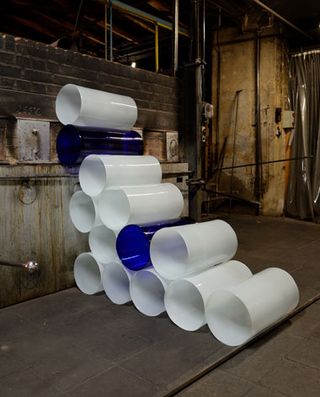
The installation will consist of between 120 to 140 cylinders in different colours and will be one of the artist's largest works to date.

The artwork was inspired by a trip to Lamberts in Germany, one of only three factories in the world to still make mouth-blown stained glass.

The process involves blowing the material into a cylindrical form before splitting it open and flattening it out.
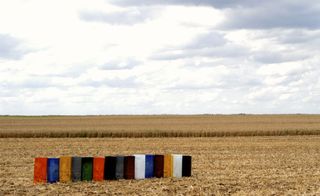
When Wintrebert saw the cylinders it was 'love at first sight'. He took some back to his studio in Fontainebleau, Paris, and began photographing them in the countryside, while deciding how to use them.
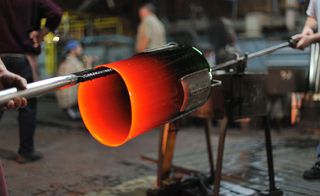
A visit to Perrier-Jouët's maison in Epernay inspired the idea of using two colours on each piece.

In addition to the flagship installation at the V&A, Wintrebert will have a solo show at London's Gallery Fumi, also from 13 to 21 September. Pictured are his 'Clouds' lights
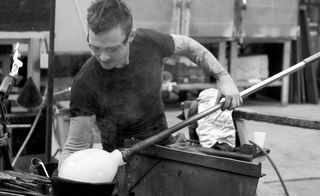
He is creating new hand-blown glass works and lighting installations for the gallery.
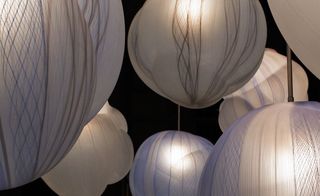
A detail of Wintrebert's 'Clouds' lights, which will go on show at Gallery Fumi
Wallpaper* Newsletter
Receive our daily digest of inspiration, escapism and design stories from around the world direct to your inbox
Emma O'Kelly is a contributing editor at Wallpaper*. She joined the magazine on issue 4 as news editor and since since then has worked in full and part time roles across many editorial departments. She is a freelance journalist based in London and works for a range of titles from Condé Nast Traveller to The Telegraph. She is currently working on a book about Scandinavian sauna culture and is renovating a mid century house in the Italian Lakes.
-
 Ikea introduces its first gaming furniture collection
Ikea introduces its first gaming furniture collectionBrännboll is the first Ikea gaming furniture collection, unveiled during Milan Design Week 2024 and designed to swiftly transform a domestic space into a gamer’s paradise
By Jasper Spires Published
-
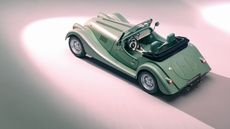 Morgan take their classic roadster and give it subtle but significant tweaks for 2024
Morgan take their classic roadster and give it subtle but significant tweaks for 2024New details and features give the compulsive Morgan Plus Four an even more pared back silhouette and driving ability
By Jonathan Bell Published
-
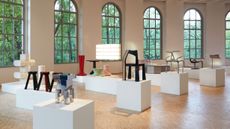 Wallpaper* Class of '24 exhibition now open at Triennale Milano
Wallpaper* Class of '24 exhibition now open at Triennale MilanoWallpaper* Class of '24 exhibition at Triennale spotlights international emerging talent in furniture and product design, with the support of AHEC and SNOW (until 21 April 2024)
By Rosa Bertoli Published
-
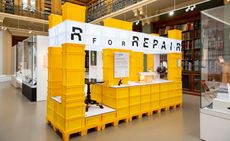 ‘R for Repair’ at London Design Festival displays broken objects, re-formed
‘R for Repair’ at London Design Festival displays broken objects, re-formedIn the second half of a two-part exhibition and as part of London Design Festival 2022, ‘R for Repair’ at the V&A displays broken objects, re-formed
By Martha Elliott Last updated
-
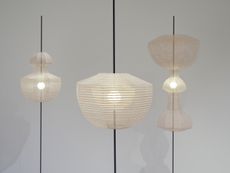 Nendo’s collaborations with Kyoto artisans go on view in New York
Nendo’s collaborations with Kyoto artisans go on view in New York‘Nendo sees Kyoto’ is on view at Friedman Benda (until 15 October 2022), showcasing the design studio's collaboration with six artisans specialised in ancient Japanese crafts
By Pei-Ru Keh Last updated
-
 ‘Finding quality through the act of making’: Pearson Lloyd celebrates 25 years of design
‘Finding quality through the act of making’: Pearson Lloyd celebrates 25 years of designPearson Lloyd’s show ‘Change Making’ reflects on past designs from its archives, showcasing the influences on and evolution of the studio, from furniture design to the NHS
By Martha Elliott Last updated
-
 Tom Dixon marks his studio's 20 years with a show of design experiments
Tom Dixon marks his studio's 20 years with a show of design experimentsMushroom, cork, steel coral and more: Tom Dixon showcases an overview of his design experiments as he celebrates his practice's 20 years
By Rosa Bertoli Last updated
-
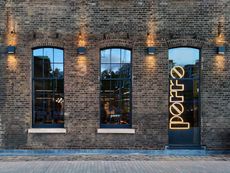 Porro unveils new London showroom at Coal Office
Porro unveils new London showroom at Coal OfficeLondon Design Festival 2022: industrial architecture meets pure geometries in the new Porro showroom, taking over a space within Tom Dixon’s Coal Office to showcase the brand’s systems and furniture
By Rosa Bertoli Last updated
-
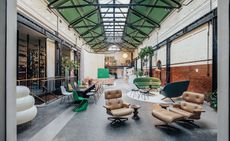 Vitra unveils new London home in the Tramshed, Shoreditch
Vitra unveils new London home in the Tramshed, ShoreditchLondon Design Festival 2022: after a year-long renovation, Vitra opens the door to its new showroom in the heart of Shoreditch
By Rosa Bertoli Last updated
-
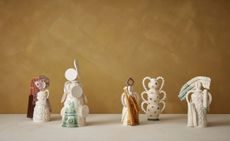 Mudlarking beside the River Thames inspires The New Craftsmen’s makers
Mudlarking beside the River Thames inspires The New Craftsmen’s makersLondon Design Festival 2022: The New Craftsmen’s new collection, ‘Claylarks’, features work from a group of creatives inspired by a River Thames mudlarking expedition
By Mary Cleary Last updated
-
 One tree, ten designers: SCP presents The One Tree Project at London Design Festival
One tree, ten designers: SCP presents The One Tree Project at London Design FestivalLondon Design Festival 2022: SCP enlisted ten British designers to create furniture and objects from a felled ash tree from founder Sheridan Coakley's Hampshire garden
By Francesca Perry Last updated